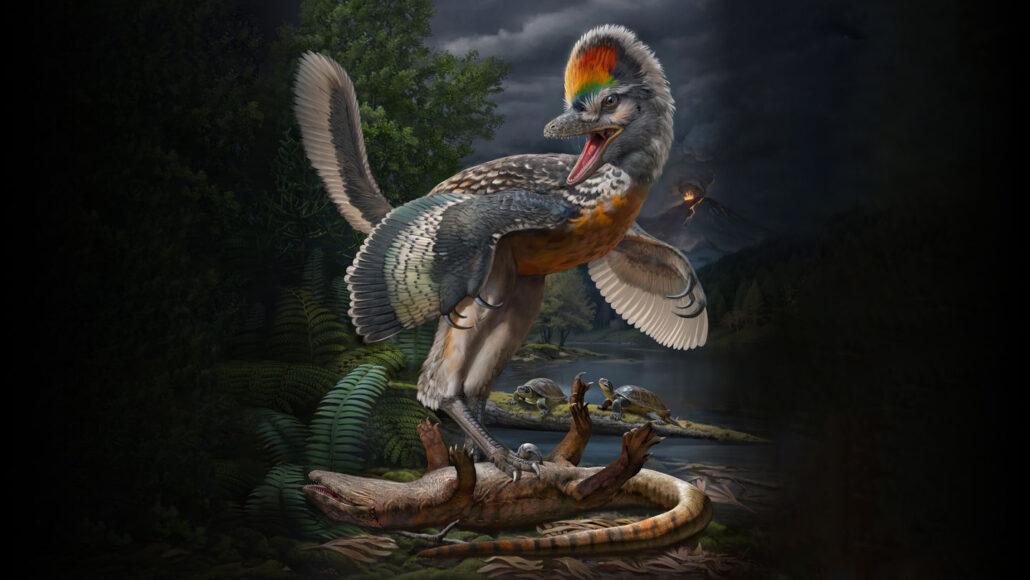Dinosaur with remarkably lengthy legs unexpectedly discovered

Early birdlike dinosaurs are thought to have lived lofty lives up in the trees. But a newly discovered creature had surprisingly long legs that may have made for a life on the run.
The leggy birdlike dino (Fujianvenator prodigiosus) lived about 150 million years ago during the Jurassic Period, researchers report September 6 in Nature. That’s around the same time as its distant cousin Archaeopteryx, one of the earliest known birds (SN: 3/13/18).
“It looks quite similar to Archaeopteryx … except the legs,” says paleontologist Min Wang of the Chinese Academy of Sciences in Beijing. “Fujianvenator has really, really long legs.”
Wang and colleagues identified the creature as one of the earliest known avialans — a group that split off from the rest of dinosaurs and eventually became birds. The first avialans are key characters in the bird origin story. But little is known about them, Wang says, due to the scant diversity of fossils found.
Early avialans discovered so far, including Archaeopteryx, are generally short-limbed, apparently equipped for moving through the trees. Pheasant-sized F. prodigiosus’ lower leg bones were twice as long as its thigh bones, a trait not found among the other known birdlike dinosaurs.
Entombed amid mudstones and shales in what is now southeastern China, the creature’s bones were discovered alongside fossils of aquatic and semiaquatic species. Those clues indicate that F. prodigiosus inhabited a swamplike environment. It probably dashed after prey like today’s ostriches or waded through water like a primitive crane, Wang says.
The first avialans weren’t all tree dwellers, he says. “It’s not the full picture.”
Our mission is to provide accurate, engaging news of science to the public. That mission has never been more important than it is today.
As a nonprofit news organization, we cannot do it without you.
Your support enables us to keep our content free and accessible to the next generation of scientists and engineers. Invest in quality science journalism by donating today.




